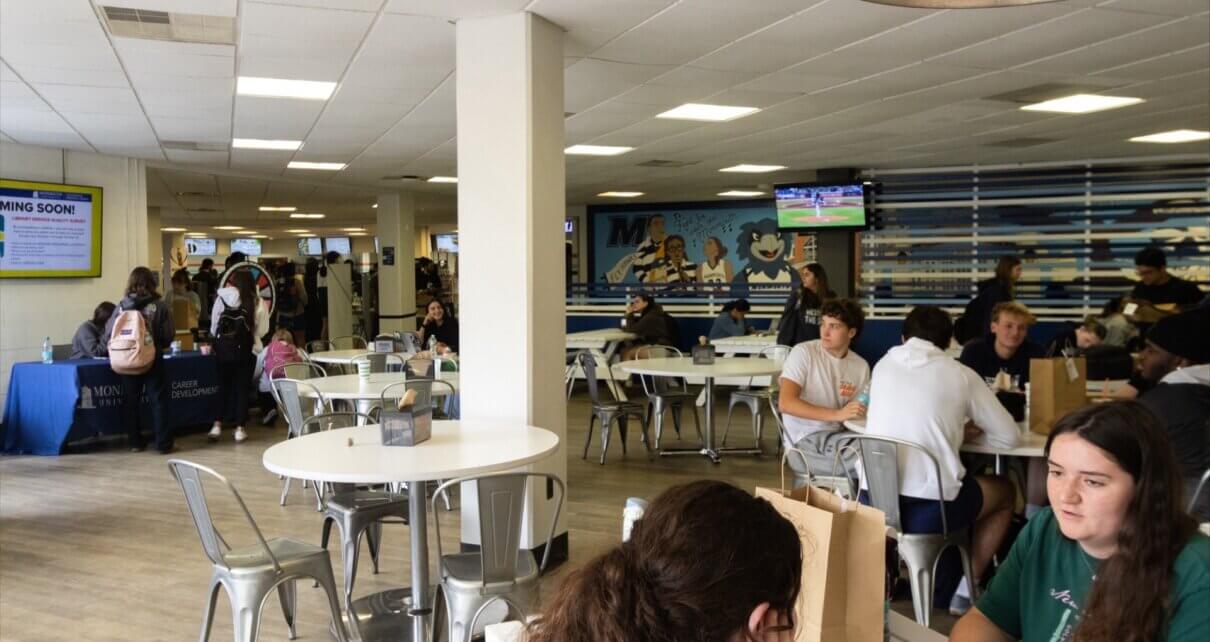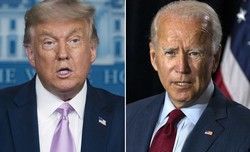This Fall, Monmouth enrolled it’s most diverse freshman class as a show of a true dedication to opening the doors to students from all backgrounds.
Patrick F. Leahy, Ed.D., President of Monmouth, mentioned that he is immensely proud to welcome this class. “I hope it is evidence of our continuing commitment to creating a welcoming, supportive environment for students of all backgrounds,” he said.
Leahy highlighted the University as a place where students can see themselves thriving.
He also noted that he was pleased with this class’s GPA. The class of 2028 incoming GPA is 3.62 which just shy of the university’s record high of 3.64, which the previous class achieved just last year. “For those students who have reported SAT scores, they are the highest ever. I hope Monmouth is seen as a place where talented students can come and be challenged academically while retaining and graduating at ever-increasing rates,” Leahy said.
In an Asbury Park Press (APP) article published on Aug. 30, it was reported that the previous incoming class was recognized as the most academically prepared class in the school’s 90-year history. This positive trend continued this year as this class is just slightly less academically prepared, according to Leahy.
Additionally, the APP article mentioned that about 34% of around 850 incoming first-year students identified themselves as racially and ethnically diverse. Similar to the previous first -year class, a large percentage of these students are first-generation students. President Leahy credited his first-rate faculty members and dedicated staff colleagues for making this happen.
As for Monmouth’s academic future, the light seems to shine bright. He said, “In general, we again enrolled one of the most academically talented classes in our history, fully one-half of whom are FLI students – this is either first-generation or low-income. Our current strategic plan aims to integrate excellence and access like no other private university in the country, and this year’s class illustrates our progress towards this ambitious goal.”
Robert McCaig, Ed.D., Vice President for Enrollment Management and Marketing Division of Enrollment Management, is a helping hand when it comes to selecting applicants for the new class. McCaig, though, gave credit to everyone across the university. He said, “My team may lead it, but recruiting a high-quality diverse class is a full University effort – faculty, staff, student ambassadors, etc. We were ecstatic to hit a new high-water mark for racial and ethnic diversity; we have been working intentionally to increase our percentage of students of color for a long time now, and it is very satisfying to see those efforts continue to pay off.”
McCaig believes that Monmouth isn’t the best educational institution that it can be without diverse people, diverse thoughts, and diverse approaches to solving the problems of an increasingly complex and interconnected world. When it comes to selecting incoming freshman acceptances, he said, “The process is the same for all applicants. They can choose whether to be evaluated with or without standardized test scores (typically the SAT or ACT) and then we look at the size and strength of the applicant pool and decide what admission cut-offs will need to be to make our enrollment target.”
Zaneta Rago-Craft, Ed.D., Advisor to the President for Diversity and Inclusion and Director of the Intercultural Center said that this news is an encouraging sign. She elaborated, “Diversity in a student body often leads to more dynamic discussions, innovative ideas, and a more vibrant campus community – not to mention helping us to meet our mission of being an institution that ‘educates and prepares students to realize their potential as leaders and to become engaged citizens in a diverse and increasingly interdependent world.’”
According to Rago-Craft, it appears highly likely that these numbers will continue to grow. She said, “Many universities are increasingly prioritizing diversity and inclusion, not just as a broad goal but as a fundamental aspect to their mission.” She added that Monmouth could attract an even greater diverse range of students in the future if they implement effective outreach and support programs on top of being situated in a region that’s rapidly diversifying at the high school graduate level.
This class, in addition to being the most diverse, additionally had the highest SAT scores in the school’s history. Hevan Warmington, a sophomore social work student, said, “As a person of color (POC), I’m not surprised to see how low the percentage of POC in the new class is, [but], one thing that does surprise me is the number being way higher than I expected.” She shared that this is something that adds to her comfort on campus. Gaining this knowledge informed her that there are more people like her at the university.
Last year’s incoming freshmen were recognized as the most academically prepared class in Monmouth’s history, which Warmington is a part of, as well. Comparing that to this year’s freshmen, Hevan anticipates a rising trend for the school. She said, “I think that means that our graduation rate is bound to rise. Monmouth’s academic future is bright.”
Rago-Craft noted that awareness of deepening racial diversity is important for all members of the Monmouth community. She said, “The achievement helps us to stand out to future students and employees, while also providing a more realistic campus experience that will help shape our students for the world of work after graduation.”
She concluded, “Students will be entering companies and organizations with a wide range of social identities, lived experiences, and perspectives. Learning to work and live together across differences now – with support and guidance from professors and mentors – is a powerful way to prepare for entering future careers and communities.”



